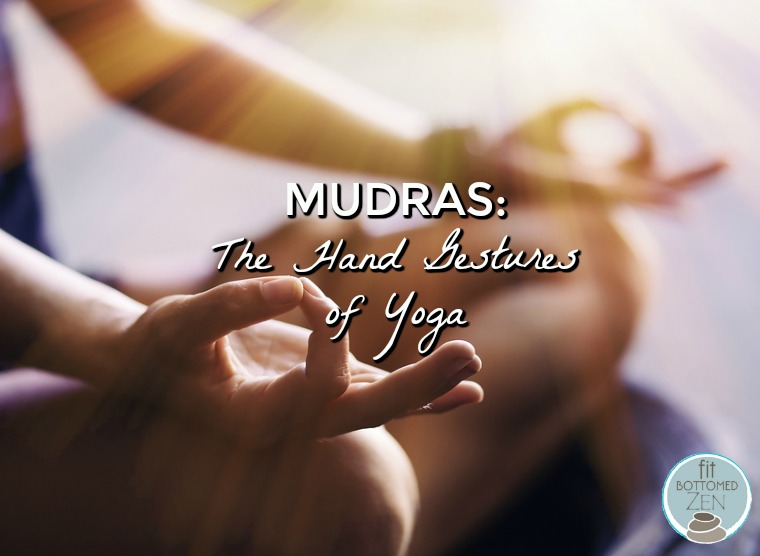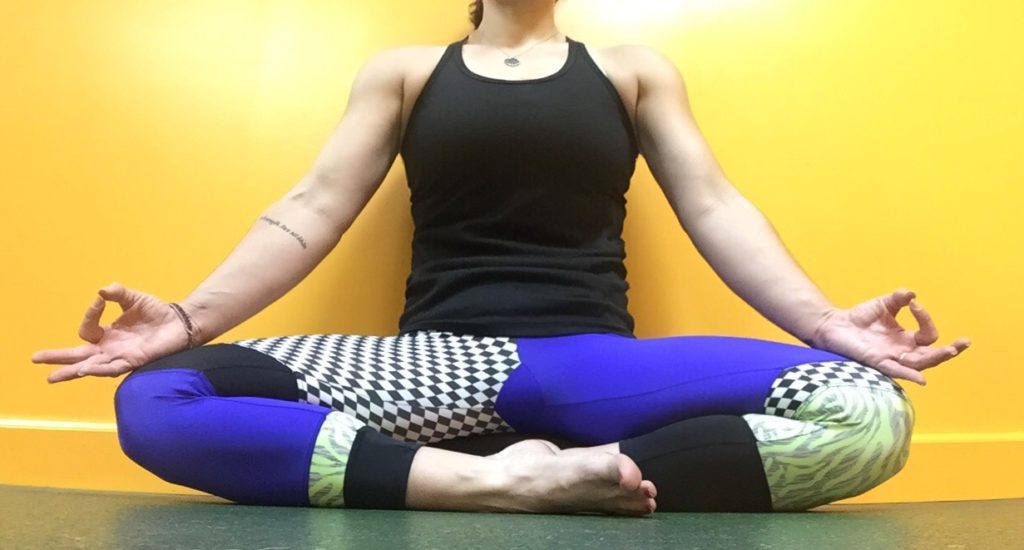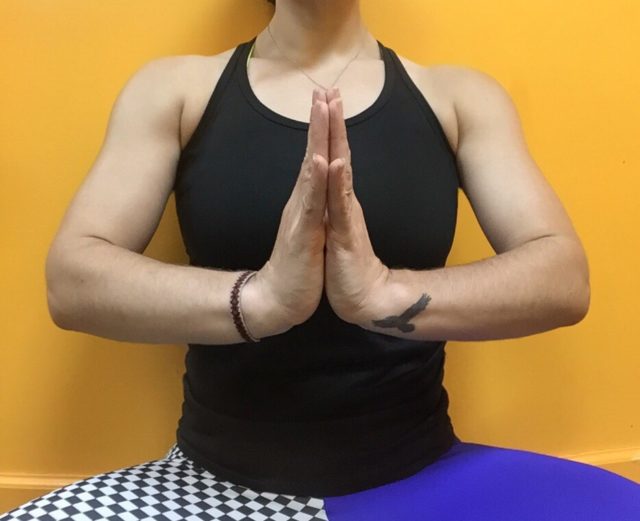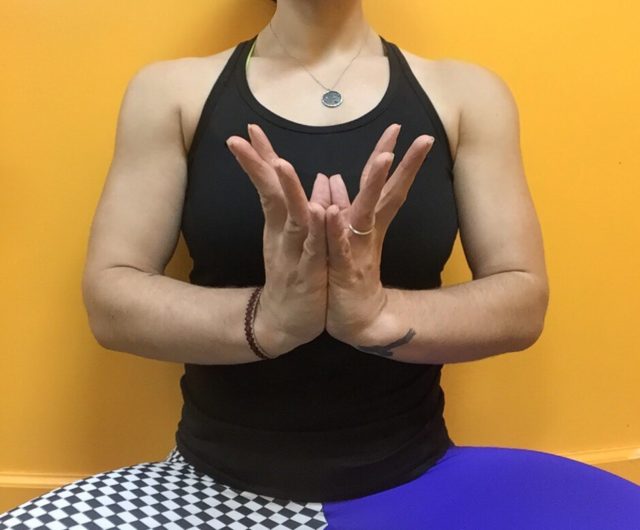Mudras: The Hand Gestures of Yoga (and Why They Rock)

You don’t really think much about your hands in yoga class, do ya? Well, at least not until your teacher tells you to connect your index finger and thumb or bow with your palms touching in front of your heart. Ever wonder why you’re doing these hand gestures? Yeah … me, too.
They’re called mudras, which means “seal” or “gesture” in Sanskrit. Each mudra has its own meaning and is used to connect to your own inner power and spirituality. The idea is that by practicing the mudras that represent the specific qualities you hope to gain, you can shift your energy and cultivate the desired characteristics within yourself. Think of it as tapping into your inner superhero during mediation. Pretty cool stuff.
Mudras aren’t just for meditation and yoga class though. They’re commonly used in the healing arts and Chinese medicine — the pressure points, energy meridians and reflex zones in both sides of the hands are routinely used in acupressure, acupuncture and massage to heal physical ailments.
Each finger has its own meaning and associated energies. For example, in Ayurveda (the sister science of yoga), the fingers are associated with the five elements: thumb = fire, index finger = air, middle finger = ether, ring finger = earth, and pinky = water. There are even ties to the chakras: thumb = solar plexus, index finger = heart, middle finger = throat, ring finger = root, and pinky = sacral.
I’ve heard it said that the open human hand represents pure infinite potential (poetic, huh?) and it’s believed that, by altering the placement of each of the fingers and/or connecting both of our hands, we can change the flow of energy in our bodies or recharge the specific energy that we need.
The best part is that mudras can safely be practiced by anyone, anywhere. I recommend sitting comfortably in a cross-legged position. You can sit against a wall for more support or you can sit on the edge of a blanket. Relax your neck and shoulders, sit up tall and breathe naturally. Spend a couple of moments just feeling the sensations and energy in your hands, using gentle pressure and holding the mudra in seated meditation for at least 5 minutes.
Sound a bit woo-woo? You never know until you try. So give the common mudras below a shot and just pay attention to your individual experience with them.
4 Common Mudras Used in Yoga

1. Jnana Mudra. First, lightly connect your thumbs and index fingers. Then, gently extend all of your other fingers and rest your hands on your knees or thighs with the palms facing up. The thumb is a symbol of God or your highest self and the index finger symbolizes the individual (you). So, by connecting the two fingers and their associated energies, you’re creating a connection between yourself and something bigger. It’s a gesture of being open to receive wisdom, which helps clear your mind and promotes a feeling of lightness and spaciousness in your heart.

2. Anjali Mudra. Bring your palms to touch in front of your heart, connecting each of your fingers. Then, gently pull the palms down slightly so they’re closer to your sternum. This is a gesture of respect, humility and surrender. It’s used to create feelings of reverence, calmness and being centered.

3. Padma (Lotus) Mudra. Bring your palms to touch in front of your heart and connect the outside edges of your pinky fingers and thumbs. Spread all your other fingers. Close your eyes halfway and look softly into the open space between your hands. This mudra is a symbol of purity and helps create a deeper connection to your heart. Do this one anytime you’re feeling lonely, hurt or misunderstood.

4. Dhyana Mudra. Bring your left hand, palm face up, to your lap with the knuckle-side of your right fingers resting on top of your left fingers. Lightly touch the tips of your thumbs together. The shape of this mudra — similar to an empty bowl — helps create feelings of emptiness, spaciousness and freedom. This is why it’s used often for meditation since a clear head is sorta what we’re going for.
Check them out and explore the effects for yourself.
Do you use mudras in your meditation practice? —Alison
